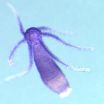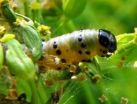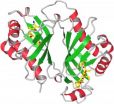Pilots and train operators are most likely to report sleep-related job performance and safety problems.
The results of the poll are striking. About one-fourth of train operators (26%) and pilots (23%) admit that sleepiness has affected their job performance at least once a week, compared to about one in six non-transportation workers (17%).
Perhaps more disturbingly, a significant number say that sleepiness has caused safety problems on the job. One in five pilots (20%) admit that they have made a serious error and one in six train operators (18%) and truck drivers (14%) say that they have had a "near miss" due to sleepiness.
Sleepiness has also played a role in car accidents commuting to and from work. Pilots and train operators are significantly more likely than non-transportation workers (6% each, compared to 1%) to say that they have been involved in a car accident due to sleepiness while commuting.
"Driving home from work after a long shift is associated with crashes due to sleepiness," says Dr. Sanjay Patel, a sleep researcher at Brigham and Women's Hospital and Harvard Medical School. "We should all be concerned that pilots and train operators report car crashes due to sleepiness at a rate that is six times greater than that of other workers."
Train operators and pilots report most sleep dissatisfaction.
Among all workers surveyed, train operators and pilots report the most work day sleep dissatisfaction. Almost two-thirds of train operators (57%) and one-half of pilots (50%) say they rarely or never get a good night's sleep on work nights, compared to 44% of truck drivers and 42% of non-transportation workers. Bus, taxi, and limo drivers report the best work day sleep satisfaction, with about one-third (29%) saying they rarely or never get a good night's sleep on work nights.
"The margin of error in these professions is extremely small. Transportation professionals need to manage sleep to perform at their best," says David Cloud, CEO of the National Sleep Foundation. "As individuals and employers, we need to know more about how sleep improves performance."
Sleepiness is common for all workers.
Roughly one in ten Americans say they are likely to fall asleep at an inappropriate time and place, such as during a meeting or while driving. The poll included a validated assessment tool used by doctors to determine whether a person is "sleepy." Anyone who suffers from excessive sleepiness should seek professional help to identify underlying conditions. This study finds that 11% of pilots, train operators, bus, taxi, and limo drivers and 8% of truck drivers as well as 7% of non-transportation workers are "sleepy."
"We found that although pilots are especially focused on obtaining adequate sleep, one in ten can still be classified as 'sleepy.' This is not acceptable. Who among us wants to take a one in ten chance of flying on a plane with a sleepy pilot?" says CPT Edward Edens, PhD of the Walter Reed Army Institute of Research.
A sleepy transportation worker is far more prone to mistakes: sleepy transportation workers report job performance problems about three times more often and report averaging about 45 minutes less sleep per night than their non-sleepy peers.
Significant number of transportation workers say their schedules do not allow enough time for sleep.
Many transportation workers cite their schedule as a major contributor to sleep problems. Almost one-half of train operators (44%) and more than one-third of pilots (37%) report that their current work schedule does not allow adequate time for sleep, compared to about one-fourth of non-transportation workers and truck drivers (27% each) and one-fifth of bus, taxi and limo drivers (20%).
In general, transportation professionals work more varied shifts than other workers, which may play a role in their sleep problems. Only 6% of pilots and 47% of train operators say they work the same work schedule each day, compared to 76% of non-transportation workers.
Time off between shifts may play a role in transportation workers' sleepiness. Non-transportation workers report having an average of 14.2 hours off between shifts, compared to 12.9 hours for pilots; 12.5 for train operators; 12.1 for truck drivers; and 11.2 hours for bus, taxi, and limo drivers. If given one more hour off between work shifts, over one-half of pilots (56%) and train operators (54%) report that they would use that hour for sleep.
Long commutes cut into transportation workers' already shortened time between shifts. Pilots report the longest commutes with 37% saying it takes more than an hour to get to work from home. Pilots and train operators have the highest average commute time of 45.5 minutes and 31 minutes, respectively, compared to a 23.8 minute average for non-transportation workers. Other research has consistently found that longer commute times have been associated with shorter individual sleep times.
"Transportation workers experience considerable variability in the days they work, the times they work, and the amount of time off between shifts. This makes it difficult for such workers to maintain regular sleep/wake schedules, which can, in turn, make it difficult for these workers to maintain alertness on the job. Employers should put more effort into designing work/rest schedules that facilitate sleep and minimize workers exposure to irregular, variable schedule changes," says Patrick Sherry, PhD, a sleep researcher and professor from the University of Denver Intermodal Transportation Institute.
Pilots and train operators nap twice as frequently.
The poll shows that transportation professionals are taking more naps than other workers. More than one-half of pilots (58%) and train operators (56%) take at least one nap on work days, compared to about one-fourth of non-transportation workers (27%). About one in five pilots (20%), bus, taxi and limo drivers (20%), truck drivers (16%) and train operators (16%) say they take 3-5 naps during the work week. Among those who report napping on work days, one-half of pilots (50%), almost one-half of truck drivers (42%), one-third of train operators (33%) and nearly one-fourth of bus, taxi and limo drivers (24%) say they actually napped during work hours in the past two weeks, compared to about one in five non-transportation workers (19%).
"Transportation workers have challenging schedules that compete with the natural need for sleep. While I'm impressed that transportation professionals nap when they are off duty, we need to better understand how to use naps to reduce sleep deprivation and overcome scheduling issues," says Thomas Balkin, PhD, a sleep researcher from the Walter Reed Army Institute of Research.
For more information about the National Sleep Foundation's 2012 poll, read the complete summary of findings, worker profiles and examples of crashes where fatigue was found to be a contributing factor.
Healthy Sleep Advice
If you are troubled by excessive daytime sleepiness or have problems getting or maintaining sleep, try the following sleep tips: Go to sleep and wake at the same time every day, and avoid spending more time in bed than needed. Use bright light to help manage your "body clock." Avoid bright light in the evening and expose yourself to sunlight in the morning. Use your bedroom only for sleep to strengthen the association between your bed and sleep. It may help to remove work materials, computers and televisions from your bedroom. Select a relaxing bedtime ritual, like a warm bath or listening to calming music. Create an environment that is conducive to sleep that is quiet, dark and cool with a comfortable mattress and pillows. Save your worries for the daytime. If concerns come to mind, write them in a "worry book" so you can address those issues the next day. If you can't sleep, go into another room and do something relaxing until you feel tired. Exercise regularly, but avoid vigorous workouts close to bedtime. If you are experiencing excessive daytime sleepiness, snoring, or "stop breathing" episodes in your sleep, contact your health care professional for a sleep apnea screening.
INFORMATION:
Poll Methodology and Definitions
The 2012 Sleep in America® annual poll was conducted for the National Sleep Foundation by WB&A Market Research, using a sample of 1,087 adults above the age of 25. This consisted of a control group of 292 non-transportation workers, 202 pilots, 203 truck drivers, 180 rail transportation workers, and 210 bus, taxi and limo drivers. The surveys were completed online using a panel of Americans who met criteria for classification as transportation professionals or controls.
The maximum sampling error of the data for the total transportation workers (795 interviews) is +/- 3.5 percentage points at the 95% confidence level. The sampling error will vary depending on the sample size and the percentages being examined in the sample.
* "Train operator" is used to designate train operator (engineer) and conductor.
2012 Sleep in America® Poll Task Force
Thomas J. Balkin, PhD (Chair)
Walter Reed Army Institute of Research
Silver Spring, Maryland
CPT Edward Edens, PhD
Walter Reed Army Institute of Research
Silver Spring, Maryland
Sanjay R. Patel, MD, MS
Harvard Medical School
Boston, Massachusetts
Patrick Sherry, PhD
University of Denver
Denver, Colorado
The National Sleep Foundation began surveying American sleep health and behaviors in 1991. NSF released the poll findings as part of its 15th annual National Sleep Awareness Week® campaign, held March 5-11, 2012, that culminates with the change to Daylight Saving Time on March 11th. With the change of clocks, NSF wishes to remind Americans to use your extra hour for sleep.
The National Sleep Foundation hosts the Sleep Health and Safety conference March 2-3, 2012 in Washington, DC to advance sleep health education for health professionals and public policy leaders.
NSF Background
The National Sleep Foundation is dedicated to improving sleep health and safety through education, public awareness, and advocacy. It is well-known for its annual Sleep in America® poll. The Foundation is a charitable, educational and scientific not-for-profit organization located in Arlington, VA. Its membership includes researchers and clinicians focused on sleep medicine, professionals in the health, medical and science fields, individuals, patients, families affected by drowsy driving and more than 900 healthcare facilities throughout North America.
The National Sleep Foundation does not solicit nor accept corporate support for its annual Sleep in America® polls; its polls are developed by an independent task force of sleep scientists and government representatives who provide expertise in developing the survey instrument, analysis and final report. Information about the National Sleep Foundation, the current and former polls and a database of sleep professionals and sleep centers who can be contacted to comment on this story can be found online at www.sleepfoundation.org
END



